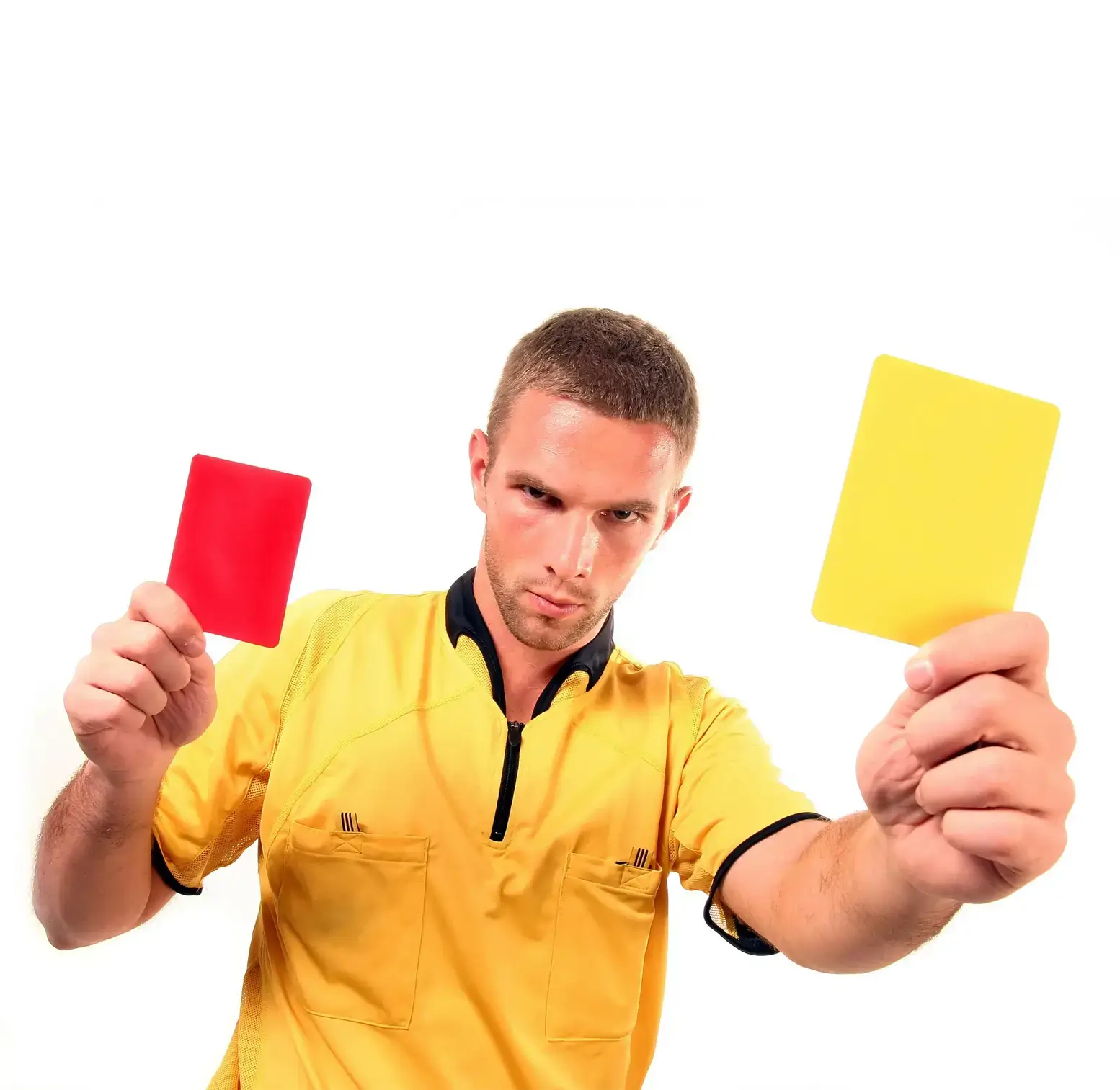CRFC BLOGS
LATEST BLOGS & NEWSLETTERS
Yellow Card vs. Red Card in Soccer: Understanding the Difference and Impact of Cards
Soccer is more than just a game of goals—it’s a sport that teaches valuable life skills like teamwork, respect, and discipline. As parents, coaches, and players, it is important to understand the rules that govern the game, especially the yellow card and red card systems. These cards play a crucial role in ensuring safety, fairness, and good sportsmanship on the field. In this article, we will explore what yellow cards and red cards are, when they are issued, and the impact they have on the game.
What Is a Yellow Card in Soccer?
A yellow card is a warning issued by the referee for a minor foul or offense. While it doesn’t result in a player leaving the field, it serves as a reminder to play within the rules. Players can receive a yellow card for actions that disrupt the flow of the game but which are not dangerous enough to merit a red card.
Why Is a Yellow Card Given?
Referees issue yellow cards for a variety of reasons, including:
- Reckless Tackles: A player may be shown a yellow card for a tackle that is overly aggressive but not dangerous.
- Time-Wasting: Holding onto the ball too long during throw-ins or free kicks.
- Dissent: Arguing with the referee or challenging their decision.
- Unsporting Behavior: Diving (pretending to be fouled) or taunting opponents.

Example of a Yellow Card Situation
Imagine a defender who lunges into a tackle but doesn’t make clean contact with the ball. The referee would likely give a yellow card for reckless play, warning the player to be more careful. This helps prevent escalation and keeps the game fair.
What Is a Red Card in Soccer?
A red card is the most severe penalty in soccer. When a player is shown a red card, they are immediately sent off the field of play and cannot return. Their team must continue the game with one fewer players, which can drastically affect the outcome of the match.
When Is a Red Card Given?
A red card is issued for serious offenses that could harm players or disrupt the fairness of the game. These include:
- Violent Conduct: Punching or kicking an opponent.
- Dangerous Tackles: A two-footed tackle or one from behind that could cause injury.
- Denying a Goal-Scoring Opportunity: A player fouls to stop a clear goal-scoring chance.
- Offensive Language: Using abusive or insulting language towards the referee or opponent.
Example of a Red Card Situation
Picture a player running toward the goal with only the goalkeeper to beat. A defender slides in and tackles the attacker from behind, preventing a clear goal-scoring opportunity. This would lead to a red card because the foul denied the attacker a clear shot at goal.

Yellow Card vs. Red Card: Key Differences
While both yellow and red cards are disciplinary actions in soccer, they differ significantly in their consequences:
- Yellow Card: A warning for minor fouls. The player stays on the field but must play more cautiously.
- Red Card: A severe punishment that results in the player being sent off the field. The team plays with one fewer player, which can drastically affect the game.
Why Are Cards Used in Soccer?
The yellow card and red card system is essential for maintaining discipline in the game. Referees use these cards to penalize foul play and unsporting behavior, helping keep the game safe and fair. By understanding the difference between a yellow card and a red card, players, coaches, and parents can better navigate the rules of the game.
The Laws of the Game and Yellow and Red Cards
The laws of the game are set by FIFA and the International Football Association Board (IFAB). These laws clearly define what constitutes a yellow card and a red card and provide referees with guidelines on when to issue them. Understanding these laws helps players avoid penalties and play the game as it was intended.
Impact on the Game
A yellow card doesn’t remove a player from the field, but multiple yellow cards or a second yellow card in the same game result in a red card. A red card has a more significant impact, as the team has to play with one less player, often leading to a more defensive strategy. The player who receives a red card may also face suspension from future games.
How Can Players Avoid Yellow and Red Cards?
Avoiding yellow cards and red cards is important for both individual players and their teams. Here are some tips for players to stay out of trouble:
- Play Safely: Always be mindful of the risks involved in tackling or physical play. Avoid reckless challenges that could lead to a foul or card.
- Respect the Referee: If a referee makes a decision you disagree with, stay calm and avoid arguing. Dissent can lead to a yellow card.
- Stay Disciplined: Managing emotions during a match is essential. If a player lets frustration take over, they may make impulsive decisions that could result in a foul or unsporting behavior.
The Role of Coaches and Parents in Preventing Cards
Coaches and parents play a vital role in helping young players understand the importance of discipline and sportsmanship. Here’s how they can help:
- Teach Respect: Emphasize the importance of respecting the referee and following the laws of the game.
- Promote Safe Play: Encourage players to focus on fair play, even when the game gets intense. Teach them to avoid reckless tackles and dangerous behavior.
- Model Good Sportsmanship: Coaches and parents can set a good example by maintaining a calm and respectful attitude during the game, showing players how to behave both on and off the field.

Conclusion: Fair Play and Discipline in Soccer
The yellow card and red card system is essential for keeping the game of soccer fair, safe, and enjoyable. While a yellow card serves as a reminder for minor infractions, a red card is issued for more serious offenses and has immediate consequences. By understanding when and why these cards are issued, players, coaches, and parents can work together to promote fair play, discipline, and sportsmanship in youth soccer.
FAQs
What happens if a player receives a red card in soccer?
When a player is shown a red card, they must leave the field of play immediately and cannot return to the game. Their team must play with one fewer player, which can significantly impact the game’s outcome.
Can a player receive two yellow cards in one game?
Yes, a player who receives two yellow cards in a single match will automatically be shown a red card and sent off the field.
What are common offenses that result in a red card?
Common offenses that lead to a red card include violent conduct, dangerous tackles, denying the opposing team a goal-scoring opportunity, and using offensive language.
How do yellow cards affect a player’s participation in a soccer match?
A yellow card is a warning. If a player accumulates two yellow cards in one game, they will receive a red card. Accumulating multiple yellow cards over the course of a season can also lead to a suspension.
How can players avoid getting a red card in soccer?
Players can avoid red cards by respecting the laws of the game, playing safely, staying calm, and avoiding dangerous tackles or unsporting behavior.

Did you find this useful?


